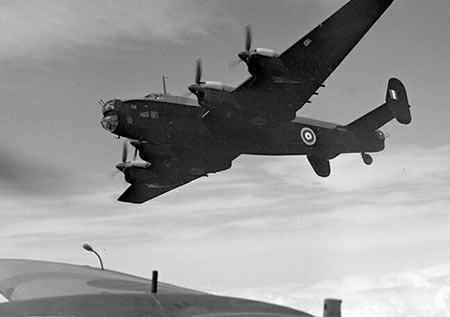
22nd October 1943 – 51 Squadron RAF Snaith, Yorkshire
Sgt. Hall (RCAF) and the rest of his crew climb aboard Halifax JN920 for the last time.
Having just completed a briefing, the target for the night being the industrial town of Kassel, the crew commence their pre-flight checks.
The four engines eventually crackle into life and at 17.55 hours the bomber left the ground for the last time.
Later that evening the Belgian hamlets of Retie and Kasterlee were alerted by the sound of low flying aero engines and went outside to see the source of this disturbance. The crippled bomber was seen circling the villages in flames.
Suddenly JN920 pitched forward and plunged into the ground with a terrific explosion.
Thus it was that seven brave young men met their tragic and untimely deaths at Retie.
The following morning found the area of the crash sealed off and under guard by the Germans, a huge blackened and smoking crater was all that was left of JN920 …until now.
The crew of Halifax JN920 LK-L
- Sgt. C. Hall, RCAF, Pilot
- Sgt. G.H. Bennett, Navigator
- Sgt. M.S. Williams, Flight Engineer
- Sgt. E. Parker, Bomb Aimer
- Sgt. R.S. Sitch, Wireless Operator
- Sgt. J.C. Cowie, Mid Upper Gunner
- Sgt. T.V. Lewis, Tail Gunner
The search is on…
During the summer of 1998 the Wings Museum began its investigations into the crash of a Halifax bomber lost on operations from RAF 51 Squadron on 22nd October 1943. Before this very little was known locally about the crew or indeed the aircraft that had crashed close to the small village of Retie during World War Two.
In 1998 the Wings Museum researched and excavated the wreckage of Halifax JN920, recovering many interesting items for preservation and display.
Today there is a dedicated display in the museum telling the unique stories of the young crew and their last flight. As a result of our investigation we felt compelled to give something back to the community and to remember the crew.
In 1999, together with the local community, we unveiled a memorial at the crash site in memory of the seven crew members who lost their lives at that spot in 1943. Several families of the crew were present for the occasion and for some it was the closure they had been seeking all these years.
Excavation of Halifax JN920…
After several trips to Belgium, the team finally located the crash site near the villages of Kasterlee and Retie, with the help of local residents and historians. The remains of the Halifax were located in a very boggy area using deep searching magnetometers. The landowner kindly gave the team permission to excavate the aircraft. It was hoped that some clue might be found as to the reason why this bomber crashed on its way to the target area.
With the final permissions in place, including from the local Mayor, a mechanical excavator was provided and the excavation of JN920 began.
Not long after the first bucket of soil was removed from the site, parts of the bomber began to emerge from the mud. Telltale black oil stains in the sandy soil and a strong smell of aviation fuel quickly told us that the excavator had found one of the areas where a Merlin XX engine had penetrated. Sure enough a propeller hub complete with the wooden propeller roots still evident, was bought to the surface along with many pistons, pieces of engine casing, engine data plates, a propeller reduction gear and an engine generator with its shiny brass identification label twinkling in the dappled sunlight.
Next to the remains of the engines the team found parts from the bomb bay and fuselage. It became obvious to the team that aircraft still had a large number of incendiary bombs on board and that the fuselage had more or less completely burned out. A rather bent and battered escape axe, dated and stamped Air Ministry 1943 with the Kings Crown, was also discovered.
Moving along the wing we found remains of the aircraft dinghy. Remains of the starboard engines and an undercarriage leg strut were also recovered together with pieces of armour plate, however, by this time the hole we had dug had started to fill with water and it became impossible to see where we were digging due to the amount of water. At this time the local fire brigade were on call to attend with two pumps to pump it out.
Eventually, thanks to their help, work was able to resume although conditions in the hole were treacherous to say the least. As Saturday drew to a close the exhausted team retired for a well earned Belgian beer, reflecting on the days findings.
The following day found the hole again full of water, the situation having been made worse by rain in the night. The next day the remains of the fourth and final engine were located.
The excavation was completed with the final shaping of a pond (as agreed with the landowner). Halifax JN920 had revealed the last of her secrets.
Some of smaller finds recovered included fragments of the Astrograph and the shattered remains of the navigator’s ruler. Several plates confirmed the mark of Halifax as being a Mark II, and other stamps confirmed the aircraft had been manufactured by LAPG (the London, Aircraft, Production Group).
Over a dozen oxygen bottles were also discovered along with hundreds of strips of “Window” strips of foil designed to confuse enemy radar.

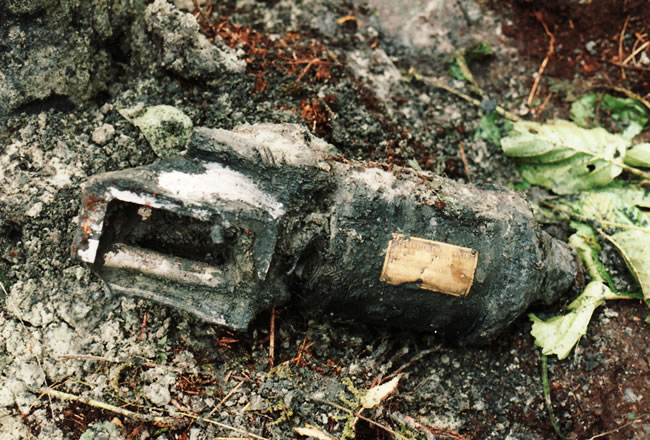
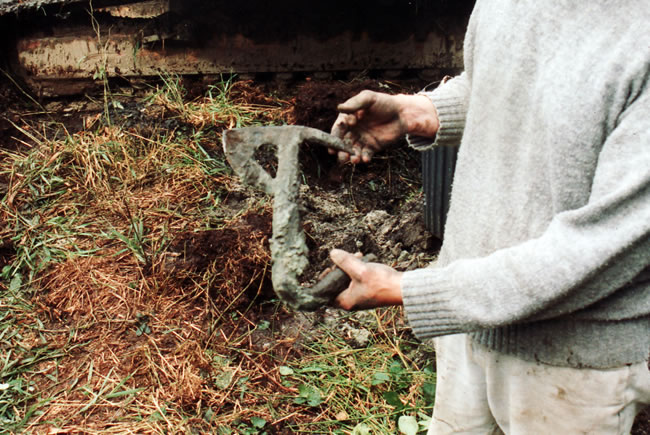
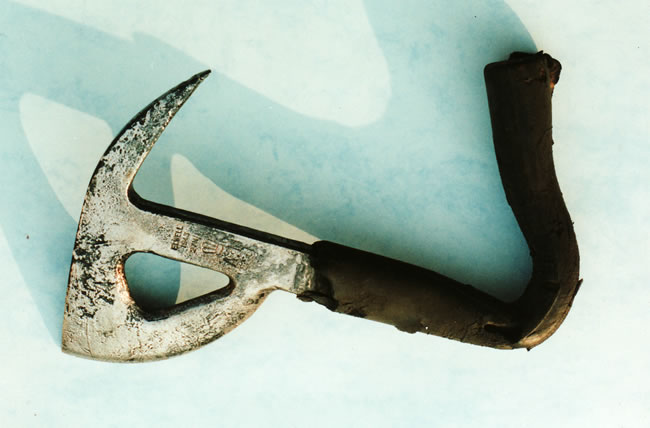
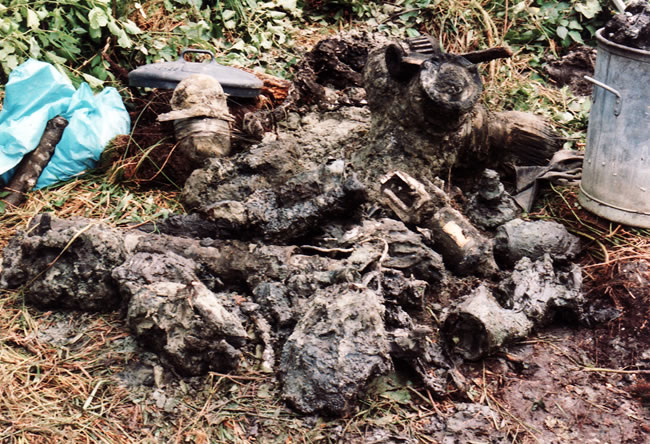
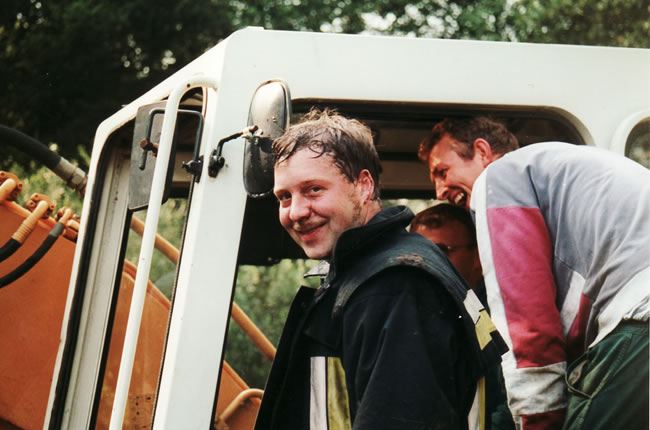
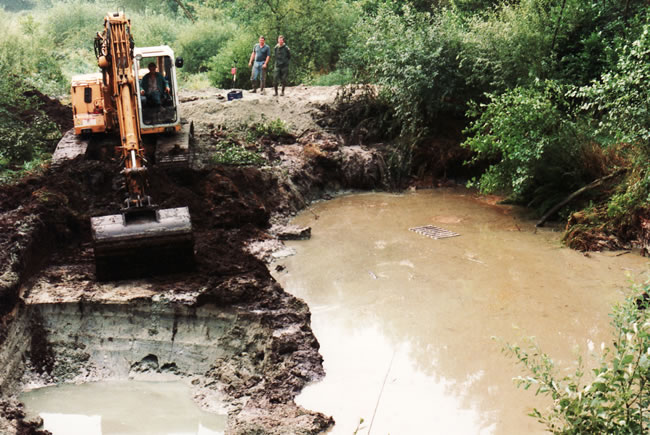
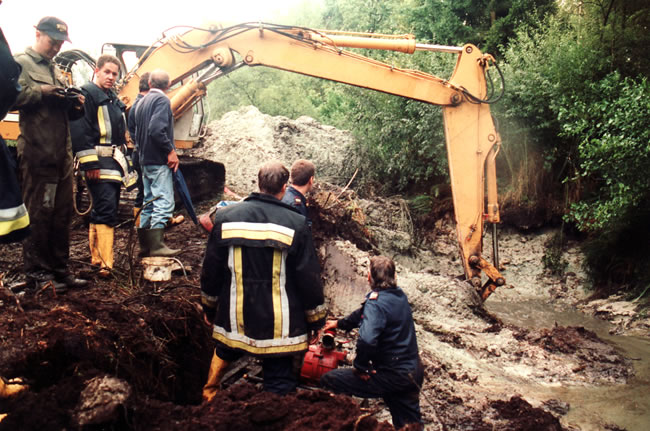
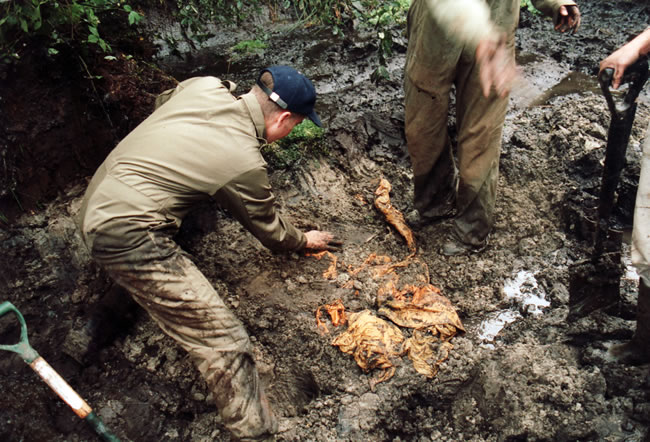
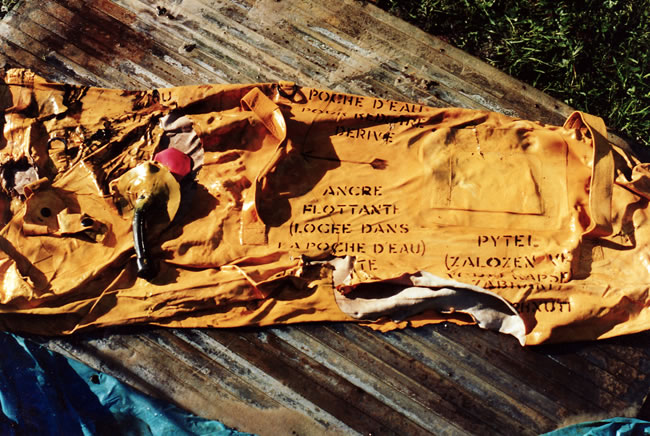
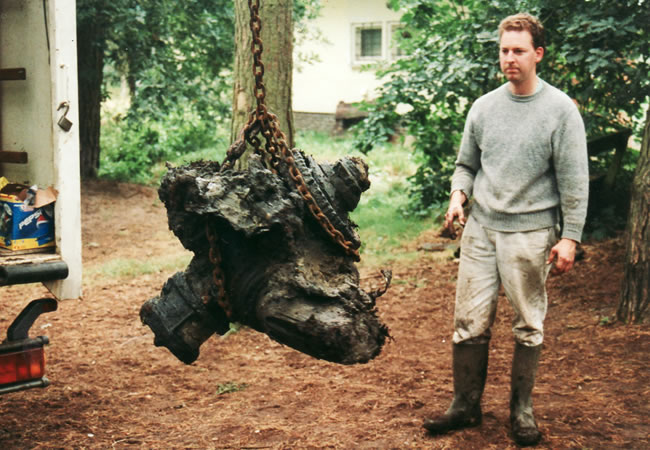
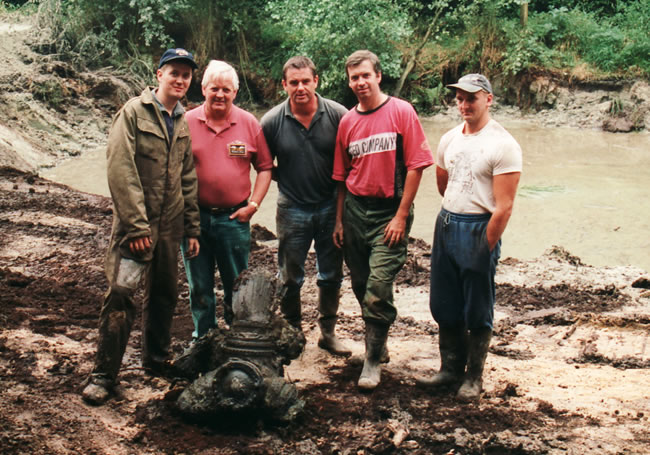
The JN920 Memorial Dedication >
